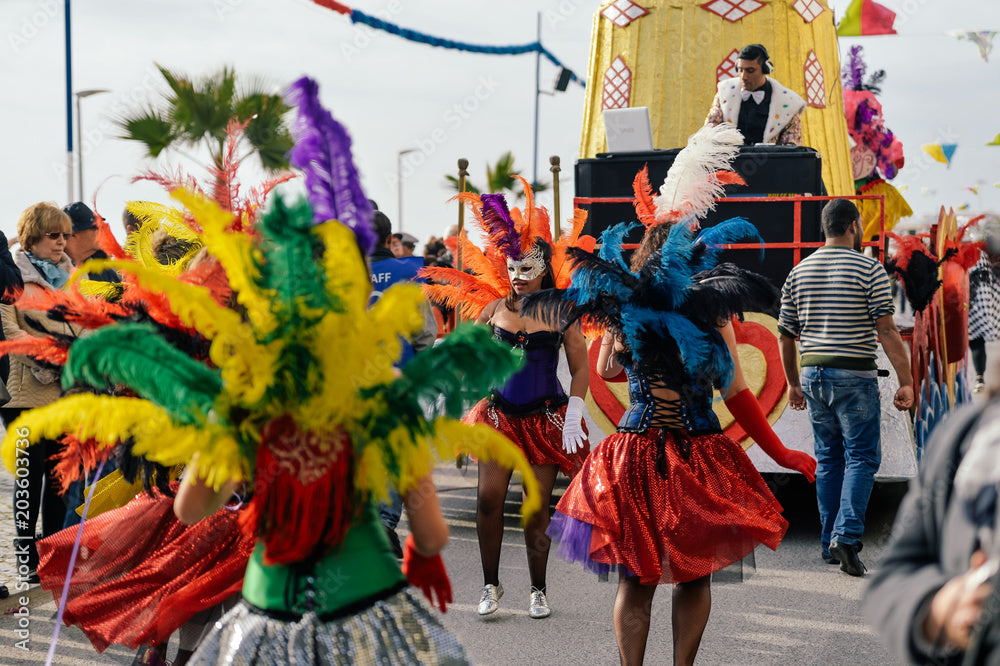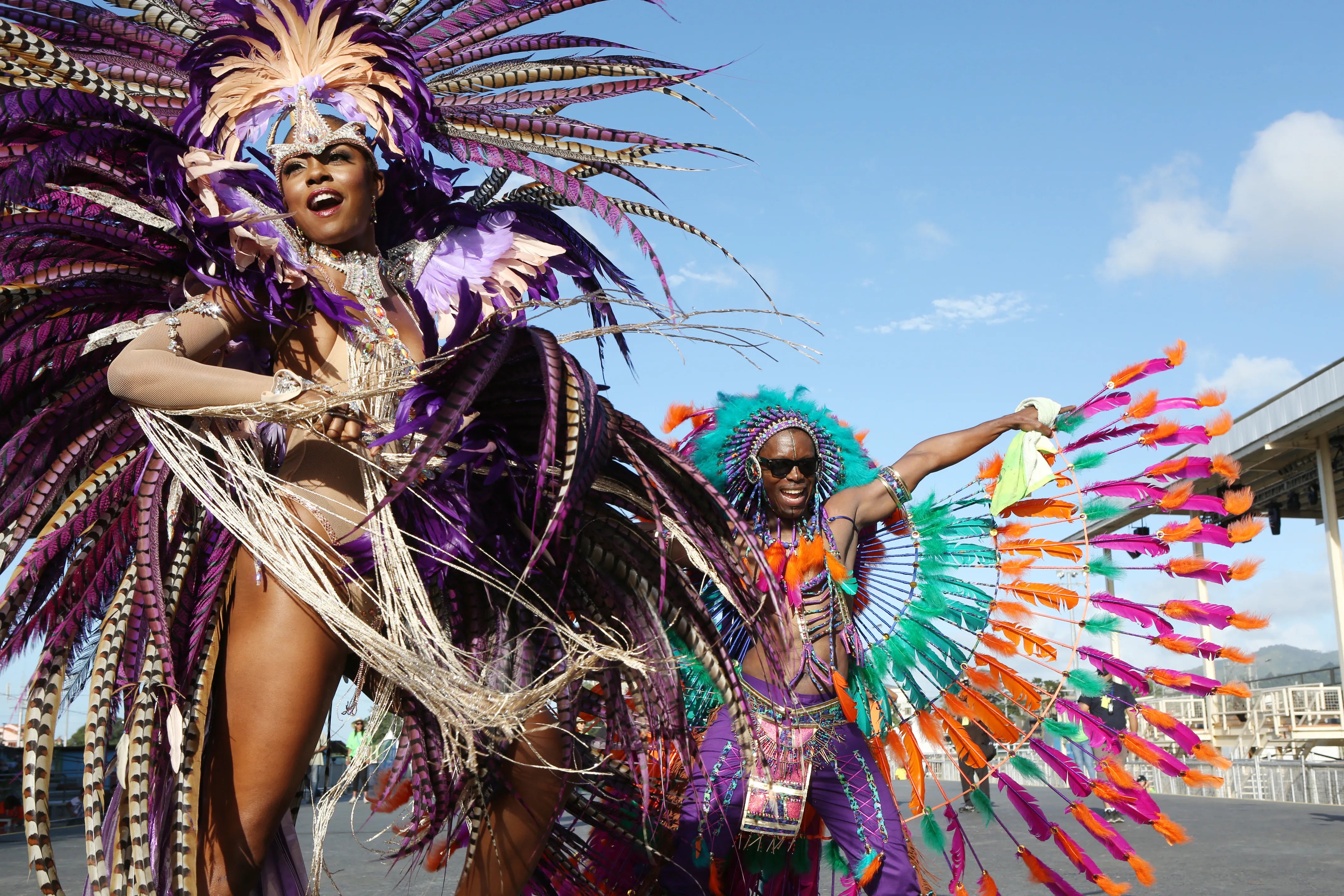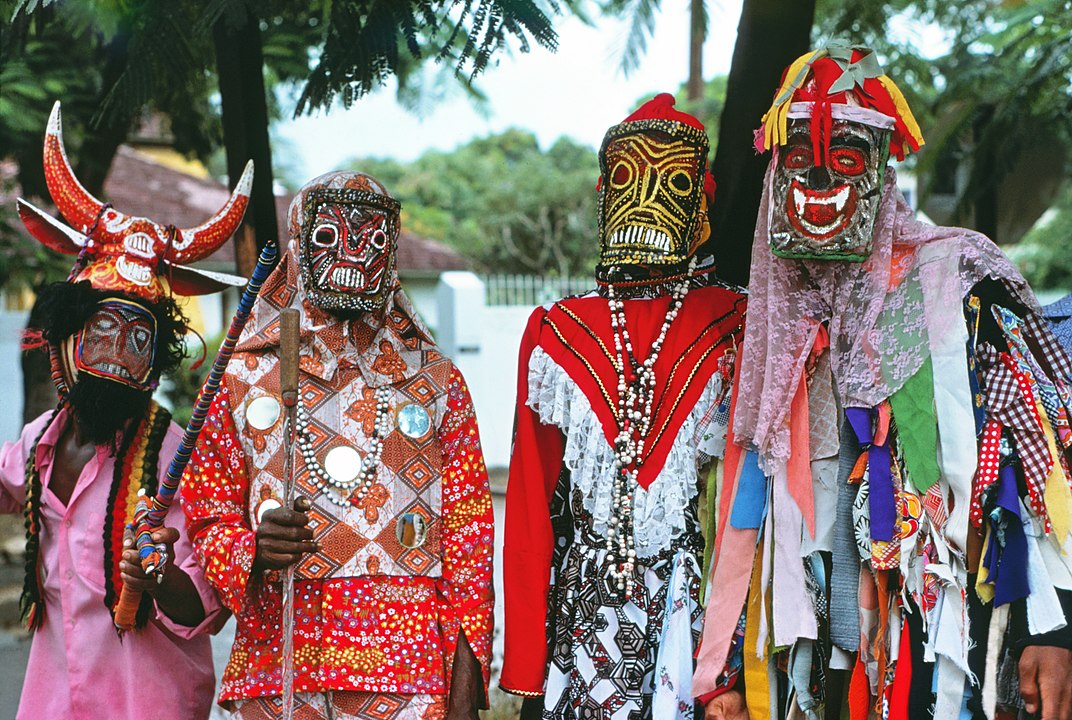In our exploration of the soul of Caribbean Carnival, we've felt the rhythm of resistance pulsing through its history. Now, let's delve into the rich tapestry of symbolism woven into every aspect of this transformative tradition.
The Masquerade: A Mirror of History
The vibrant costumes and masks of Carnival are more than mere decorations; they are storytellers, each character a living embodiment of a chapter in the Caribbean narrative. The Midnight Robber, with his flowing cape and skull-like mask, represents the trickster spirit, the clever underdog who outsmarts the oppressor. The Dame Lorraine, a male masquerader dressed as a grand European lady, satirizes the colonial elite, subverting power dynamics through parody.

These characters, and countless others like the towering Moko Jumbies and the rhythmic Jab Jabs, are not just fanciful creations. They are the manifestations of ancestral wisdom, of the resilience and wit that allowed a people to maintain their humanity in the face of dehumanization.
Crafting Identity: The Art of the Costume

By WikiPedant - Own work, CC BY-SA 4.0, https://commons.wikimedia.org/w/index.php?curid=49392505
The act of creating and donning a Carnival costume is a transformative ritual in itself. The meticulous craftsmanship passed down through generations is a testament to the value placed on this annual metamorphosis. Materials are chosen for their symbolic potency: mirrors to deflect negativity, cowrie shells as symbols of prosperity, feathers as representations of the ability to rise above earthly hardships.
When a masquerader steps into their costume, they are not merely putting on a disguise. They are invoking the spirit of their ancestors, becoming a vessel for a power that transcends the individual. In this moment, they are connected to something greater, to a shared history and a collective resilience.
The Movement of Memory: Dance as Resistance
The dances of Carnival, from the frenetic energy of J'ouvert to the graceful fluidity of Bele, are more than just expressions of joy. They are kinetic repositories of cultural memory, a physical embodiment of histories that were suppressed but never extinguished.
During slavery, African dances were often forbidden, seen as a threat to the imposed order. By continuing to move to these rhythms, even in secret, enslaved people were enacting a powerful form of resistance. They were asserting their humanity, their connection to a cultural heritage that could not be erased. When we dance at Carnival, we honor this legacy. Each step is a remembrance, each sway a celebration of the unbreakable spirit that sustained our ancestors.
Preserving the Essence
As Carnival continues to evolve and spread across the globe, it is crucial that we understand and cherish the profound symbolism at its core. By engaging with the meanings behind the masks, by learning the stories woven into every costume, we ensure that Carnival remains a living, breathing testament to Caribbean resilience and creativity.

This is the true power of Carnival: it allows us to transform centuries of pain into expressions of beauty, to assert our humanity in the face of a history that sought to deny it. When we celebrate Carnival, we are not just participating in a festive tradition. We are tapping into a deep well of ancestral wisdom, connecting with a part of ourselves that can never be subdued or suppressed.
So as you marvel at the spectacular masquerade this Carnival season, take a moment to reflect on the profound stories being told through every character, every dance, every beat of the drum. And as you join in the celebration, know that you are part of a proud lineage, one that has always found a way to assert the beauty and indomitable nature of the Caribbean spirit.
We invite you to share your own reflections and experiences of Carnival symbolism using the hashtag #OrijinCelebrates. Together, we can ensure that the soul of Carnival continues to thrive, a beacon of resilience and a celebration of the enduring Caribbean spirit.
Read more

Close your eyes and feel the beat - that rhythm pulsing through the heart of the Caribbean. It's a rhythm born from the fires of resistance, carried forward on the winds of freedom. This is the so...

From the first strike of the drum to the last echoes of soca fading into the night, music is the lifeblood of Caribbean Carnival. It's the heartbeat that moves the masses, the soundtrack to this gr...


Leave a comment
All comments are moderated before being published.
This site is protected by hCaptcha and the hCaptcha Privacy Policy and Terms of Service apply.